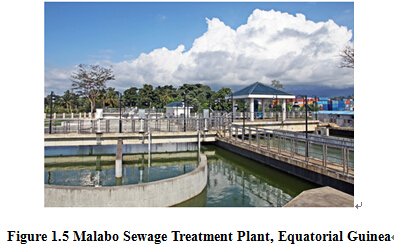Operating sewage treatment plant in shortage in Central Africa
chinagate.cn, March 24, 2015 Adjust font size:
Beijing Municipal Research Institute of Environmental Protection and Tongji University recently issued Research report of Sino-Africa wastewater treatment cooperation, to analyze status quo of wastewater treatment and reuse in Africa.
Countries like Chad, Central Africa Republic, Cameroon, Equatorial Guinea, Republic of the Congo, Democratic Republic of the Congo, etc. are located in Central Africa. These countries depend on the Congo River and its tributaries for water use. Of these, Equatorial Guinea and Cameroon are politically stable and economically well-off, while the others are extremely underdeveloped, without even a national water monitoring project.
Only a small fraction of population in these countries can get access to clean water (10% in Republic of the Congo, for instance), and sewage is discharged into lakes and rivers via pipes since there is no operating sewage treatment plant. Based on data of sewage treatment equipment exporting to Central African from the United States in 1,996~2,000 compared with Greece (data obtained from US Department of Commerce) it can be seen that investment on sewage treatment in these countries is still low (Table 1.5). This is especially true of the Central Africa Democratic Republic of the Congo which just experienced war and being the least developed economically have the smallest market demand.
Table 1.5 U.S. Exports of Water Equipment into Central African Countries and Greece, 1996-2000(U.S. dollars)
|
Countries(U.S. dollars) |
1996 |
1997 |
1998 |
1999 |
2000 |
|
Equatorial Guinea |
840,610 |
1365,998 |
1,029,403 |
1,443,188 |
40,197 |
|
Cameroon |
89,506 |
58,000 |
79,581 |
351,011 |
111,423 |
|
Angola |
433,268 |
287,511 |
2,705,289 |
3,007,116 |
1,900,579 |
|
Republic of the Congo |
136,952 |
830,719 |
1,530,088 |
429,782 |
537,877 |
|
Central Africa Republic |
0 |
231,249 |
0 |
12,473 |
0 |
|
Greece |
1,698,359 |
7,201,040 |
2,545,769 |
5,223,201 |
3,296,321 |
Cameroon, which is representative of a stable political and economic entity, is selected for further investigation. Yaound, its capital and the second largest city, has a population of 1.5 million. In 2003 John Butterworth et al discovered that 81% of household water use comes from national water supply company, but there is no municipal sewage treatment system. Most households use pit latrines, and laundry wastewater is discharged into open channel and then valley, and finally used as irrigation water for crops and horticultural plants.
In Central African countries there is huge demand for sewage treatment facilities. Many countries and cities in the region do not have such treatment systems. At present, a large number of international and Chinese companies have begun to cooperate and work with the water department of these countries to construct drinking water and sewage treatment system, but the number is still small. China Gezhouba Corporation has built the largest, most advanced sewage treatment plant for Malabo, Equatorial Guinea (Figure 1.5).


